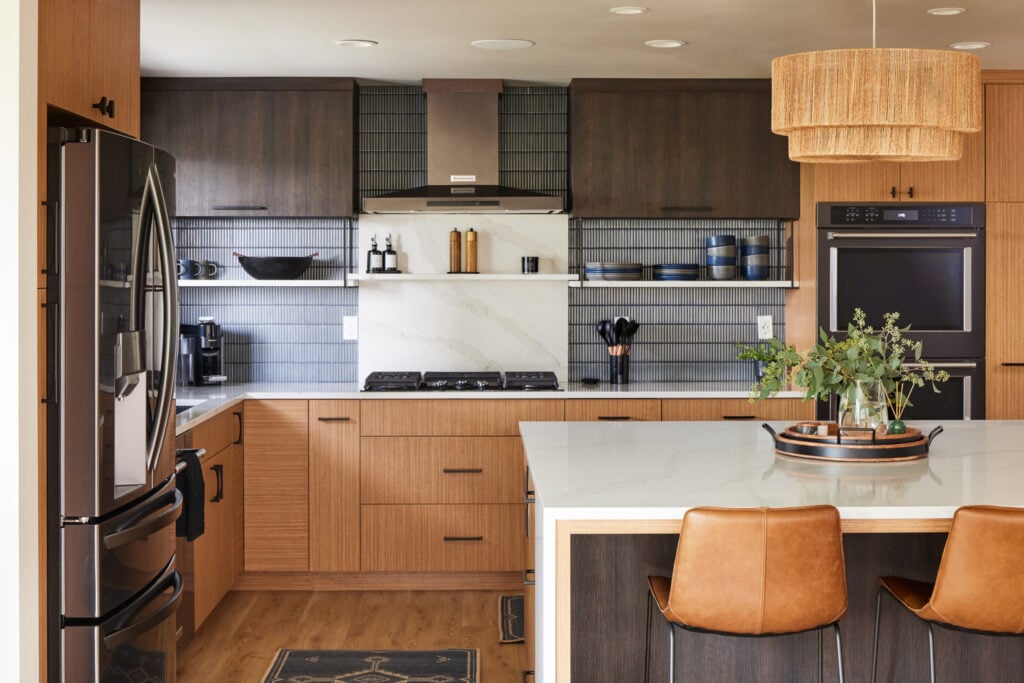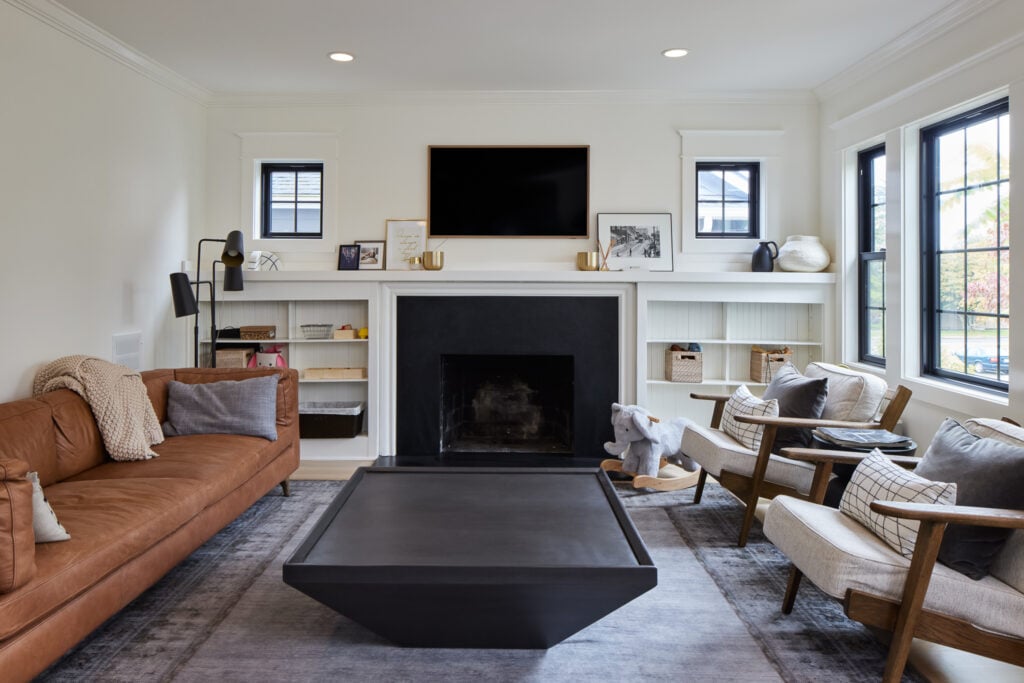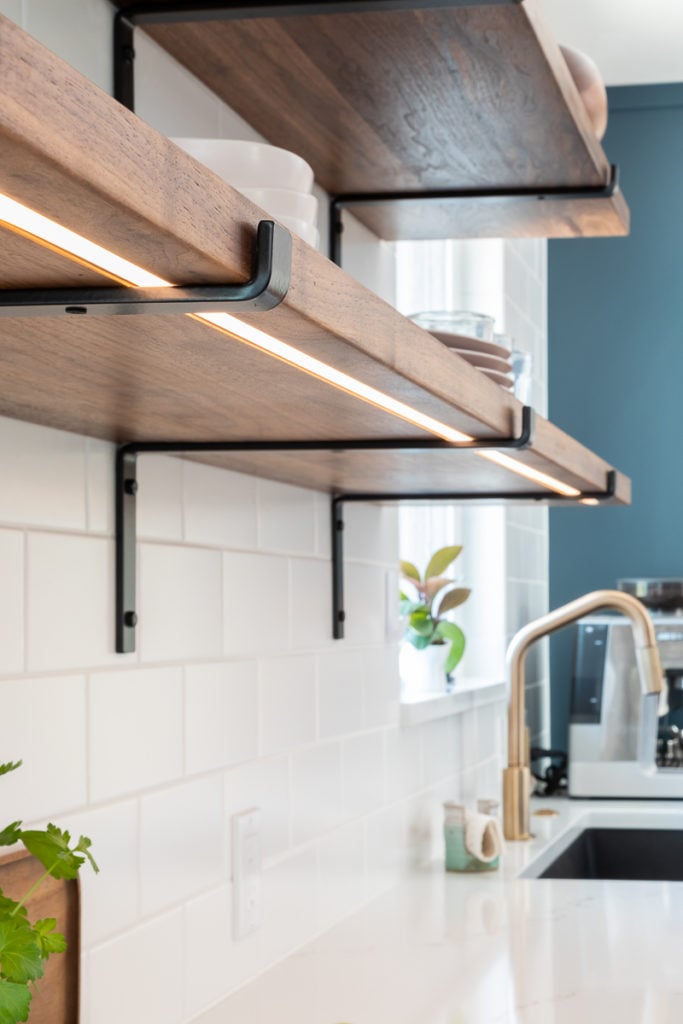Construction codes change slowly, but modern builders aren’t waiting around for new codes. They’re taking initiative by utilizing advanced technologies like AeroBarrier to build better now. We recently used AeroBarrier on large remodel and were very impressed by the massive reduction in envelope leakage, which will no doubt lead to a better performing and more comfortable home. We want to help spread the word about this impressive air sealing upgrade with the help of Clint at Cascade AeroBarrier.

What is AeroBarrier?
AeroBarrier is a highly effective air sealing process that seals building envelope leaks up to ½” with an aerosolized sealant spray. The process is relatively straightforward. Before insulation, a home is pressurized so the sprayed AeroBarrier sealant automatically seeks out an escape path (via nail holes, gaps, etc). The sealant sticks to the rough points of air leakage and quickly builds upon itself to form an airtight seal. The blower door is hooked up to a computer program that monitors the progress in real time, so you can watch the ACH50 (air exchanges per hour at 50 pascals) number tick down from just outside.
AeroBarrier is so effective because it finds leaks that may not be visible to the human eye, would be easily missed, or are in difficult locations to reach manually. Automating the air sealing process is the way of the future. We were excited to try it out on a large home remodel and addition in the Seattle area and achieved amazing results with 3 sprayers going. The home got down to just 1 ACH50! We expect this to go up to 2 ACH50 once venting and utilities are done, which is still a very impressive seal.














According to their website, AeroBarrier gives “worry free, guaranteed air sealing results in up to 1/3 of the time it would usually take.” Actual seal times average 1-3 hours, though our seal took quite a bit longer. We learned some valuable lessons about the best way to build in preparation for air sealing, and where to look out for high leakage (in this case, the plumbing stacks and attached garage) when the AeroBarrier process is starting. The AeroBarrier crew will also be on the lookout for these spots and will seal any missed leaks greater than ½” manually.
The prep work and setup usually take the most time, so setting aside at least a half day for sealing is reasonable. For larger homes, or remodels where existing conditions are less controllable, we recommend setting aside a full day. The cost for the setup, sealant, install, blower door test and cleanup is dependent on the target ACH50, phase of construction, and size of building, among other factors.
As a contractor focused on sustainability, we feel confident recommending this product and process to our eco- and health-conscious clients. The water-based formula is non-toxic and GreenGuard Gold certified, so there’s no worry about job site safety, but you may consider wearing a mask near the home while AeroBarrier is being actively sprayed to reduce the likelihood of inhalation. There was residue left on the ground following the sealing, but after a week of work the sealant particles had essentially disappeared. All that was left was perfectly sealed, albeit hard to see, spots where the AeroBarrier was doing its job.

AeroBarrier Process
- Tape off all windows, doors and other areas (such as chimneys) that do not need sealing
- Warm the house to ensure pressurization
- Use a modified blower door to pressurize the home and get a baseline Air Changes per Hour (ACH) reading
- Spray AeroBarrier sealant to seal all building envelope leaks up to ½ inch
- Track and analyze the progress on the computer display
- Stop once the desired level of airtightness is reached.
View this short video to see the AeroBarrier process in action:
Why is Air Sealing a Home so Important?
Air sealing, and the mechanical ventilation and HVAC to go along with it, is one of the most important parts of building a quality home. Air sealing is what prevents a home from being drafty or needlessly using energy during hot and cold seasons. Unfortunately, as Clint says “Air sealing isn’t as sexy as quartz countertops and closet systems when designing a house because you can’t really immediately see or feel it.” Getting homeowners on board is a matter of education. As contractors, we need to step up and share our building science knowledge in a way that matters to homeowners. The simplest way to do that is talking about home comfort and health.
A home with great air sealing, above-code insulation and effective air circulation will have the best indoor air quality no matter what the weather, air quality, or pollen level is outdoors. Here in the Pacific Northwest, where smoky skies are becoming more familiar in the summer, indoor air quality is acutely important. Well-sealed homes keep the unwanted, polluted air out. Especially for homeowners with young children, allergies, asthma, or sensitivities, we recommend focusing a good portion of your home building investment on air quality. While shiny finishes are certainly beautiful, the comfortability of your home is arguably more important.
Clint shares his reasons for getting into the air sealing business: “Being a third-generation builder, I grew up in the trades. I’ve always been interested in why we do things rather than just doing it the way grandpa did. With the desire to build better I started learning about building science. With all the resources on the internet, online magazines like JLC & Fine Homebuilding, Instagram, and podcasts, I had a huge advantage over past generations. In 2017 I read an article about a game changing product that was going to revolutionize air-sealing homes. Less than a year later, we started Cascade AeroBarrier. Today our only focus is helping builders and homeowners in the Puget Sound build healthy, durable, efficient, and comfortable homes by air-sealing them with AeroBarrier.”
The Benefits of AeroBarrier
To recap, AeroBarrier is simply a better air sealing process than traditional sealing and most anything on the market today. It’s the perfect building envelope companion to efficient HVAC and mechanical ventilation systems, allowing homeowners to get the most value out of their energy-efficient home investments. Other benefits to homeowners include:
- Get a true R-value out of your installed insulation and a more comfortable home
- More efficient mechanical systems
- Reduces a home’s overall energy demand and utility bills
- Waterborne, Green certified product that is healthy for indoor air quality
Addition benefits to builders include:
- Lower labor costs due to less manual air sealing
- No blower door retesting
- Exceeding building codes
- Attaining green building requirements easily
It’s obvious the benefits of AeroBarrier justify the cost and provide lasting benefits for the full lifespan of the building. When we asked Clint what he thought was next in building science he shared: “We are now sealing HVAC ductwork with AeroSeal. This is a process very similar to AeroBarrier that is specifically designed and formulated for the air ducts in houses. We can go into a new or old house and seal the ductwork from the inside. This is a game changer for older houses that weren’t built to the standards we have today for efficiency.” We hope to utilize that technology soon!






